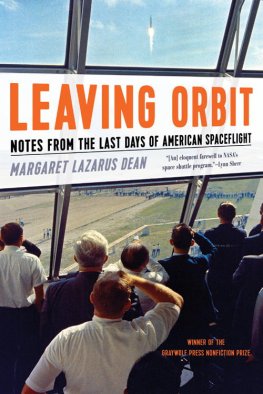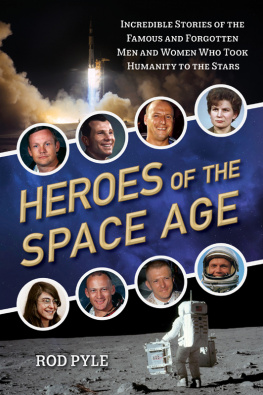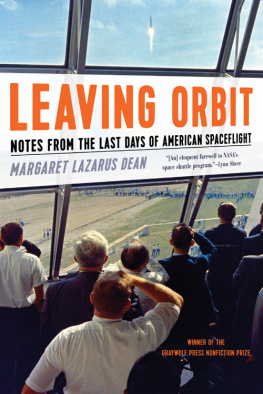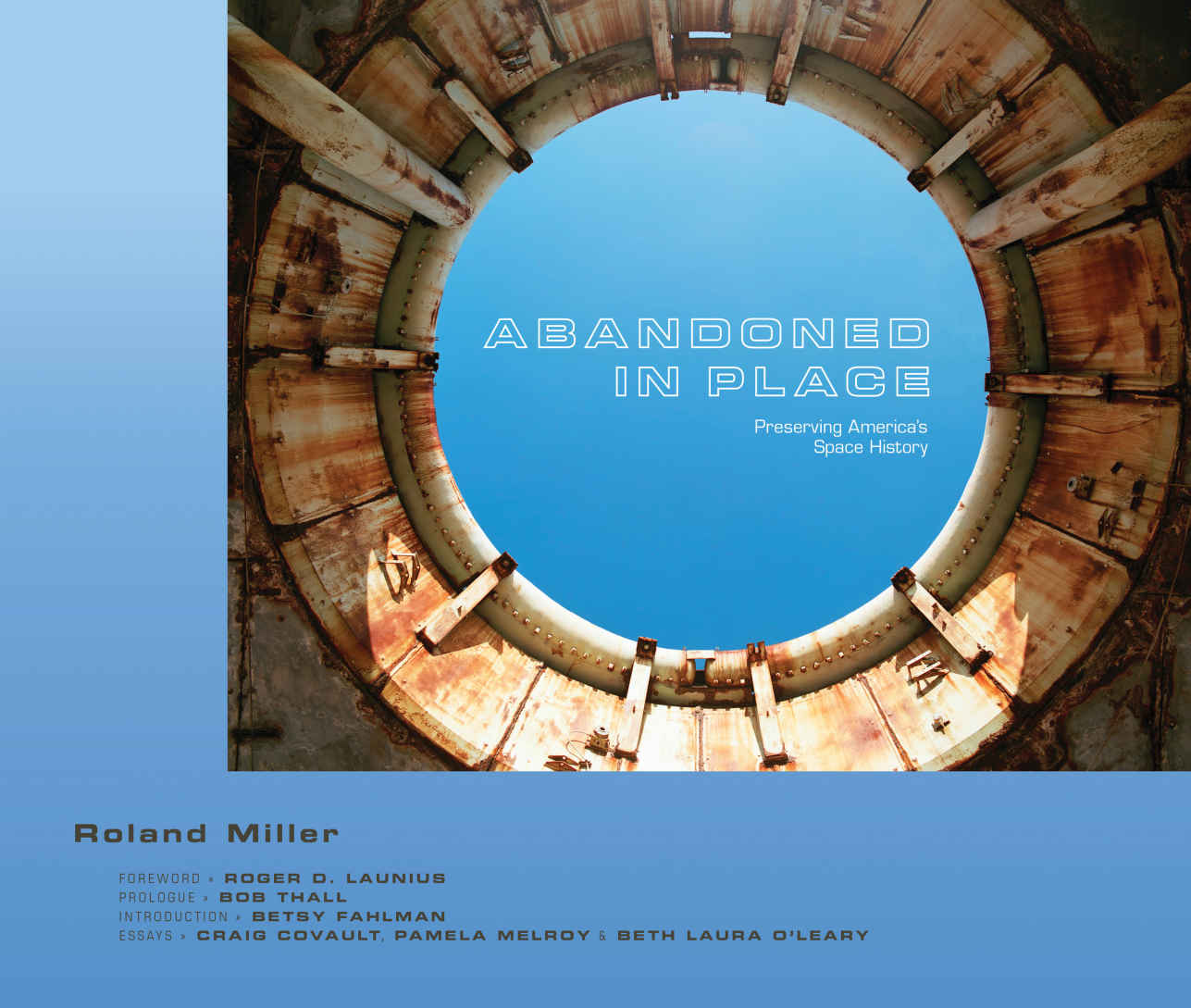Abandoned in Place
ABANDONED IN PLACE
Preserving Americas Space History
ROLAND MILLER
Foreword by Roger D. Launius
Prologue by Bob Thall
Introduction by Betsy Fahlman
Essays by Craig Covault, Pamela Melroy, and Beth Laura OLeary

2016 by Roland Miller
All rights reserved. Published 2016
Printed in China
21 20 19 18 17 16 1 2 3 4 5 6
The Library of Congress has cataloged the printed edition as follows:
Miller, Roland, 1958
Abandoned in place : preserving Americas space history / by Roland Miller ; foreword by Roger D. Launius ; prologue by Bob Thall ; introduction by Betsy Fahlman ; essays by Craig Covault, Pamela Melroy, and Beth Laura OLeary.
pages cm
ISBN 978-0-8263-5625-3 (cloth : alk. paper)
ISBN 978-0-8263-5626-0 (electronic)
1. Launch complexes (Astronautics)FloridaCape CanaveralHistory.
2. AstronauticsUnited StatesHistory. 3. Abandoned buildingsFloridaCape Canaveral. I. Launius, Roger D. II. Title.
TL4027.F5M55 2016
629.40975927dc23
2015007796
Cover photograph: Launch Ring, Launch Complex 34, Apollo Saturn, Cape Canaveral Air Force Station, Florida, 1990. Courtesy of the author.
Designed by Lila Sanchez and Felicia Cedillos
Ray Bradburys Abandon in Place is reprinted by permission of Don Congdon Associates, Inc. 1981 by Ray Bradbury
This book is dedicated to all the men and women who played a part in getting the United States to the moon and back.
for Amy
Contents
Ray Bradbury
Roger D. Launius
Bob Thall
Betsy Fahlman
Craig Covault
Pamela Melroy
Beth Laura OLeary
Abandon in Place
Ray Bradbury
Three elegies written on visiting the deserted rocket pads at Cape Canaveral
Abandon in Place.
No Further Maintenance Authorized.
Abandon. Turn away your face.
No more the mad high wanderings of thought
You once surmised. Let be!
Wipe out the stars. Put out the skies.
What lived as center to our souls
Now diesso what?now dies.
What once as arrow to our thoughts
Which target-ran in blood-fast flow
No longer flies.
Cut off the stars. Slam shut the teeming skies.
Abandon in Place.
Burn out your eyes.
Where firebirds once
Now daubers caulk the seams;
Where firewings flew
To blueprint young mens dreams,
Now warbler here and osprey weave their nests
From laces lost from off a spacemans tread.
The great hearthplace stands cold,
Its Phoenix dead.
No more from out the coals
Bright salamanders burn and gyre,
Only the bright beasts skins and restless bones bed here,
And lost the fire.
O, Phoenix, rub thy bones,
No more suspire!
Flint souls, strike mind against wild mind.
Return! Be born of spent desire.
Bright burn. Bright burn!
O mighty Gods voice, shorn,
Give shout next Easter morn. Be born!
(Our prayer calls you to life.)
Reborn of fire!
Abandon in Place.
So the sign says, so the words go.
The show is spent, the fire-walkers gone,
And gone the glow at dawn.
This day? No rockets rise like thunder.
The wonder still remains
In meadows where mound-dwellers not so long ago
Envied the birds, the untouched stars,
And let their touching envy grow.
Machineries stir here with falls of rust;
The lust for space still echoes
In the birds that circle lost in mourning cries
Repeating shouts of crowds long-spent
Whose aching shook the skies.
The sea moves down the shore
In wave on wave full-whispering,
No more. No more.
When will the harvesters return
To gather further wonders as a fuel
And let them burn?
How soon will all of Earth mob round, come here once more
To stop the night,
Put doubt away for good with rocket light?
O soon, O let that day be soon
When midnight blossoms with grand ships
As bright and high as noon.
Prepare the meadows, birds, and mounds,
Old ghosts of rocketmen, arise.
Fling up your ships, your souls, your flesh, your blood,
Your blinding dreams
To fill, refill, and fill again
Tomorrow and tomorrow and tomorrows
Promised and re-promised
Skies.

Launch Ring
Launch Complex 34
Apollo Saturn
Cape Canaveral Air Force Station, Florida
1990
Foreword
Recapturing Our Youth
All that is left of Cape Canaverals Launch Complex 34, the first site used to launch Saturn I rockets for the Apollo program in the 1960s, are a concrete and refractory brick pad, a reinforced concrete pedestal that served as a base for the rocket, a launch control center (now used for storage), and two steel blast deflectors. NASA mothballed the site, which was used between 1961 and 1968, in November 1971 and cannibalized most of its components in April 1972. Even so, NASA retained control of Launch Complex 34, and it later became a NASA tour stop for many years. Most significant, Launch Complex 34 was designated, along with several other sites at Cape Canaveral, Florida, a National Historic Landmark in April 1984. It now shows significant signs of deterioration from the weather.
Launch Complex 34 has three markers, each suggesting the myth and memory of the race to the moon, that ethereal adventure of my youth. Two of them are plaques documenting the tragedy of Apollo 1, the capsule fire that killed astronauts Gus Grissom, Ed White II, and Roger Chaffee on January 27, 1967. One of these two plaques names the three astronauts and states: They gave their lives in service to their country in the ongoing exploration of humankinds final frontier. Remember them not for how they died but for those ideals for which they lived. The other states, AD ASTRA PER ASPERA (A ROUGH ROAD LEADS TO THE STARS), and ends, GOD SPEED TO THE CREW OF APOLLO 1. Both commemorate, in an especially reverential manner, the most dramatic event of the launch pads history and the most tragic incident of the entire moon-landing effort. These plaques interpret the disaster as an example of sacrifice for a higher purpose; they are a statement of faith in the eternal place of the crew in human history. They also emphasize that the long road of exploration requires the sacrifice of those engaging in it, with some offering the ultimate sacrifice. Only through this process may America reach for the stars.
A third sign, stenciled on one leg of the concrete pedestal facing the Atlantic Ocean, reads: ABANDON IN PLACE. In that statement, an unknown worker encapsulated the fate of one of the largest and most extraordinary endeavors in the history of the United Statesindeed, in the history of the world. Ironically, for all the effort that went into the race to the moon, upon its successful completion much of the infrastructure created to support it was abandoned. Some was altered for other uses, and much more was torn down. This includes not only sites on Earth, but also six landing sites on the moon.
Roland Millers book documents the state of the artifacts of the space age: the launch complexes, research and development facilities, laboratories, test sites, and manufacturing centers of the great enterprise of the space ages first fifteen years. There are, of course, well-cared-for museums and historic sites around the country that tell this story of space flight, but the relics of the effort are strewn across the landscape like so many dinosaur bones. These remnants of space exploration signal another time, which seems so far away to us now. Also part of this story are the rusted missiles and spacecraft placed in rocket gardens around the nation; the Apollo boilerplate capsule in a park gazebo near Lancaster, California, forgotten by most; the oddities collected by roadside sellers; and the stray space-race objects in ad hoc museums. So, too, are the Moon Hut in Cape Canaveral, an astronaut hangout since Apollo, and the McDonalds near the Johnson Space Center in Houston, with a giant plastic Apollo astronaut standing on its roof.









